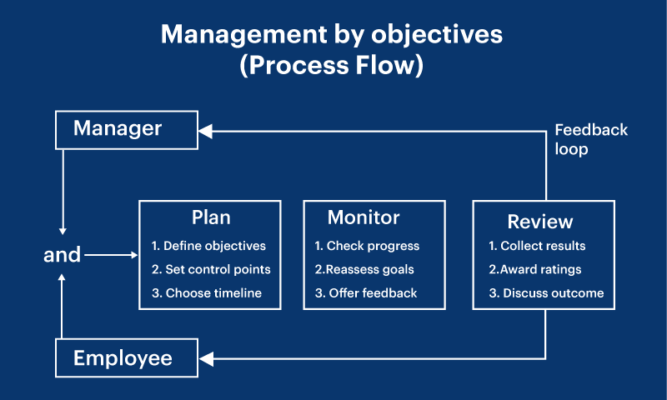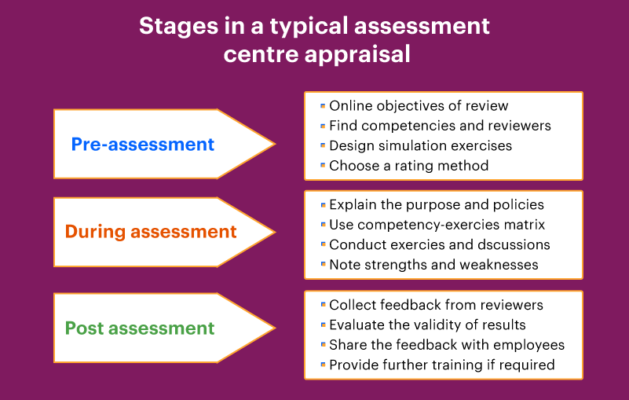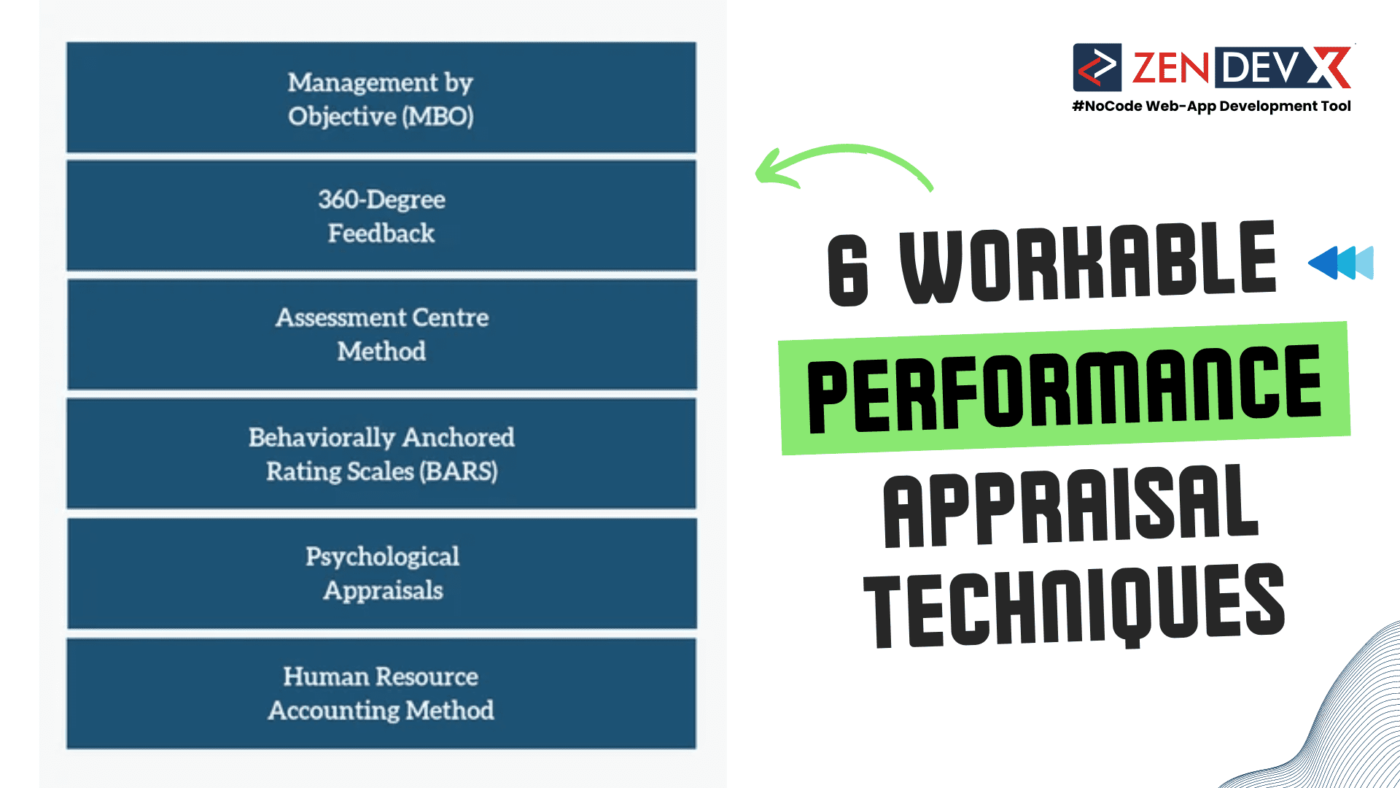How does performance appraisal work?
A performance evaluation is a routine, systematic way to evaluate an employee’s work performance in relation to preset employment standards. It entails a subjective examination of the person’s value to the company, potential for future development, areas of strength and improvement.
What is the definition of a 360-degree appraisal?
One comprehensive approach to employee evaluation is a 360-degree appraisal. It gets anonymous input from subordinates, managers, and coworkers to give staff members thorough and useful performance reviews.
Employee Performance Appraisal
For companies to increase staff productivity and enhance results, the employee performance evaluation process is essential. Annually, performance assessments assess an employee’s output and performance in relation to a predefined set of goals.
Not only is performance management the deciding element in an employee’s pay increase and promotion, but it also has the ability to precisely assess an employee’s abilities, areas of strength, and weaknesses.
Performance reviews are seldom used well, nevertheless, because the current approaches don’t internalise the performance data of the employees. HR managers should review their current process and attempt putting one of the six contemporary performance appraisal techniques described below into place to avoid performance reviews turning into nothing more than meaningless buzzwords.
Six modern performance appraisal methods
Organisations can improve employee performance inside the company with the appropriate performance appraisal approach. A competent approach to employee performance reviews can make the entire process satisfying and successful.
Here’s a close look at the six most-used modern performance methods:
1. Management by Objectives (MBO)
With management by objectives (MBO), managers and staff members choose, arrange, plan, and communicate the goals they want to concentrate on during a given appraisal period. Managers and subordinates argue the viability of reaching those specified goals and review the progress made to control after establishing clear goals.
With the SMART approach to validate objectives to determine if they are specific, measurable, attainable, realistic, and time-sensitive, this performance appraisal approach successfully aligns the overall organisational goals with the aims of the personnel.
Results from the review period—quarterly, half-yearly, or annual—determine how well an employee does. Promotion and a pay increase are the rewards for success; transfer or more training are the consequences for failure. Usually, this procedure emphasises measurable objectives more than intangible ones like commitment, interpersonal skills, etc.

Incorporating MBO into your performance management process
To ensure success, the MBO process needs to be embedded in the organizational-wide goal setting and appraisal process. By incorporating MBO into the performance management process, businesses can improve employee’s commitment, amplify chances for goal accomplishment, and enable employees to think futuristically.
Ideal for:
Measuring the quantitative and qualitative output of senior management, including managers, directors, and executives. (any size organisation)
Common reason for failure:
MBO programme incomplete, insufficient business goals, absence of top management participation
Steps to implement a successful MBO program:
- Every manager must have 5-10 goals expressed in specific, measurable terms
- Manager can propose their goals in writing, which will be finalized after a review
- Each goal needs to include a description and a clear plan (list of tasks) to accomplish it
- Determine how progress will be measured and how frequently (minimum quarterly)
- List down corrective actions that will be taken if progress is not in accordance with plans
- Ensure that goals at each level are related to the organizational objectives and levels above/below
Did you know?
Retail giant Walmart manages the performance of its top, middle, and first-line managers with a comprehensive MBO participative method.
2. 360-Degree Feedback
360-degree feedback is a multidimensional performance appraisal method that evaluates an employee using feedback collected from the employee’s circle of influence, namely managers, peers, customers, and direct reports. This method will not only eliminate bias in performance reviews but also offer a clear understanding of an individual’s competence.
This appraisal method has five integral components:
1.Self-appraisals
Self-appraisals offer employees a chance to review their performance and understand their strengths and weaknesses. However, if self-appraisals are performed without structured forms or formal procedures, they can become lenient, fickle, and biased.
2. Managerial reviews
Performance reviews conducted by managers are a traditional and basic form of appraisal. These reviews must include individual employee ratings awarded by supervisors as well as the evaluation of a team or program done by senior managers.
3. Peer reviews
As hierarchies move out of the organizational picture, coworkers get a unique perspective on the employee’s performance, making them the most relevant evaluators. These reviews help determine an employee’s ability to work well with the team, take initiative, and be a reliable contributor. However, friendship or animosity between peers may distort the final evaluation results.
4. Subordinates Appraising manager (SAM)
This upward appraisal component of the 360-degree feedback is a delicate and significant step. Reporters have the most unique perspective from a managerial point of view. However, reluctance or fear of retribution can skew appraisal results.
5. Customer or client reviews
The client component of this phase can include either internal customers, such as users of the product within the organization, or external customers who are not part of the company but interact with this specific employee on a regular basis.
Customer reviews can better evaluate an employee’s output; however, these external users often do not see the impact of processes or policies on an employee’s output.
Advantages of using 360-degree feedback:
- Increase the individual’s awareness of how they perform and the impact it has on other stakeholders
- Serve as a key to initiate coaching, counseling, and career development activities
- Encourage employees to invest in self-development and embrace change management
- Integrate performance feedback with work culture and promote engagement
Ideal for:
Private sector organizations than public sector organizations as peer reviews at public sector organizations are more lenient.
Common reason for failure:
Leniency in review, cultural differences, competitiveness, ineffective planning, and misguided feedback
Did you know?
Top private organizations, such as RBS, Sainsbury’s, and G4S, are using 360-degree, multi-rater performance feedback to measure employee performance.
3. Assessment Centre Method
The concept of an assessment center was introduced way back in 1930 by the German Army. Still, it has been polished and tailored to fit today’s environment. The assessment center method enables employees to get a clear picture of how others observe them and the impact it has on their performance. The main advantage of this method is that it will not only assess the existing performance of an individual but also predict future job performance.

During the assessment, employees are asked to take part in social-simulation exercises like in-basket exercises, informal discussions, fact-finding exercises, decision-making problems, role-play, and other exercises that ensure success in a role. The major drawback of this approach is that it is a time-intensive and cost-intensive process that is difficult to manage.
Advantages of the assessment center method:
- Enhance a participant’s knowledge, boost their thought process, and improve employee efficiency.
- Can be tailored to fit different roles, competencies, and business needs
- Offer an insight into the employee’s personality (ethics, tolerance, problem-solving skills, introversion/extroversion, adaptability, etc.)
Ideal for:
Manufacturing organizations, service-based companies, educational institutions, and consulting firms to identify future organizational leaders and managers.
Guidelines to implement assessment center practice:
- Use job analysis to determine the components of effective performance
- Identify performance metrics that can be measured using this assessment center
- Classify meaningful and relevant candidate behavior in the assessment process
- Find assessment techniques that can ideally elicit ideal behavioral information
- Spot assessors and assessee’s, excluding immediate supervisors
- Provide thorough training to assessors and reviewers
- Maintain a system of performance records for each candidate
- Review records and reward employees or provide training accordingly
Did you know?
Microsoft, Philips, and several other organizations use the assessment center practice to identify future leaders in their workforce.
4. Behaviorally Anchored Rating Scale (BARS)
Behaviorally anchored rating scales (BARS) bring out both the qualitative and quantitative benefits in a performance appraisal process. BARS compares employee performance with specific behavioral examples that are anchored to numerical ratings.
Each performance level on a BAR scale is anchored by multiple BARS statements, which describe common behaviors that an employee routinely exhibits. These statements act as a yardstick to measure an individual’s performance against predetermined standards that are applicable to their role and job level.
The first step in creating BARS is generating critical incidents that depict typical workplace behavior. The next step is editing these critical incidents into a common format and removing any redundancy. After normalization, the critical instances are randomized and assessed for effectiveness. The remaining critical incidents are used to create BARS and evaluate employee performance.
Advantages of using BARS:
- Enjoy clear standards, improved feedback, accurate performance analysis, and consistent evaluation.
- Eliminate construct-irrelevant variance in performance appraisal ratings by emphasizing specific, concrete, and observable behaviors more.
- Decrease any chance for bias and ensure fairness throughout the appraisal process.
Ideal for:
Businesses of all sizes and industries can use BARS to assess the performance of their entire workforce, from entry-level agents to C-suite executives.
Common drawbacks of BARS:
- High chance for subjectivity in evaluations
- Hard to make compensation and promotion decisions
- Time-consuming to create and implement
- Demands more from managers and senior executives
5. Psychological Appraisals
Employees’ unrealised potential is revealed in part by psychological assessments. This approach looks more at how an employee will perform going forward than at their previous job. Seven key performance elements—interpersonal skills, cognitive capacities, intellectual qualities, leadership skills, personality traits, emotional quotient, and associated skills—are examined by these evaluations.
In-depth interviews, psychological testing, talks, and other assessments are among the many methods used by licenced psychologists to evaluate an employee. Still, this is a complicated and very slow process, and the psychologist performing the treatment has a significant influence on the outcome quality.
Psychological assessments are carried out with consideration to certain situations. For example, one can evaluate an employee’s ability to persuade, their behavioural, emotional, and other responses to a hostile customer.
Advantages of psychological appraisals:
- Extract measurable, objective data about not just an employee’s performance but also potential
- It can be deployed easily when compared with other performance appraisal methods
- Offer introverted or shy employees a platform to shine and prove their potential
Ideal for:
Large enterprises can use psychological appraisals for a variety of reasons, including developing a leadership pipeline, team building, conflict resolutions, and more.
Common reasons for failure:
The absence of proper training, the lack of trained professionals to administer reviews, and candidates’ nervousness or anxiety can skew results.
Did you know?
Ford Motors, Exxon Mobil, and Procter & Gamble use psychological appraisals to test the personalities and performance of their employees.
6. Human-Resource (Cost) Accounting Method
The performance of an employee is evaluated by the human resource (cost) accounting approach using the financial gains that the individual provides to the business. It is calculated by dividing the cost to the business of keeping a worker with the financial gains (contributions) that the company has derived from that particular worker.
A cost accounting approach to performance evaluation considers unit-wise average service value, quality, overhead costs, interpersonal interactions, and other considerations. The heavy reliance of the human resources accounting approach on the cost and benefit analysis and the reviewer’s recall capacity is its disadvantage.
Advantages of the human cost accounting method:
Measure employee cost and value effectively to determine the financial effects of an employee’s performance on the bottom line of the company.
Ideal for:
One employee’s performance has the power to make or break a startup or small company.
Implementation of human resource cost accounting method:
- Determine the discrepancy between the employee’s present package and the industry
- Find out how much money and non-money an employee adds to the company.
- Put down all the accomplishments of the employee throughout the review period (number of new deals won, improvement in revenue, etc.).
A performance review approach for employees oriented towards the future
As it shows your opinion of your staff and your level of concern for their morale, selecting the appropriate performance review approach is more important than ever. Finding the best performance review approach for your requirements is only the first step in putting it into practice correctly to close important performance gaps and deal with urgent problems that affect ROI.


